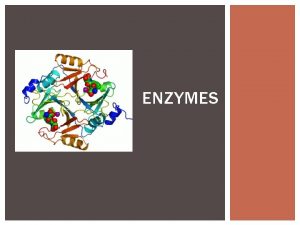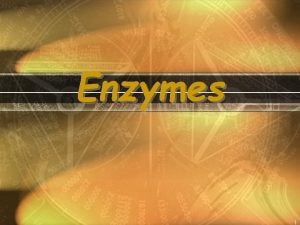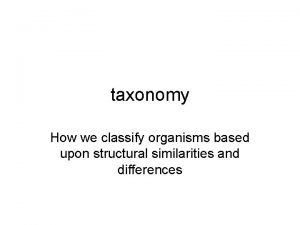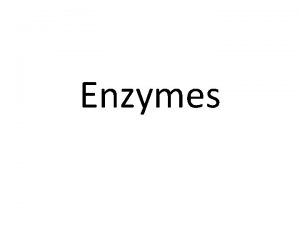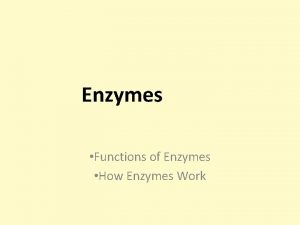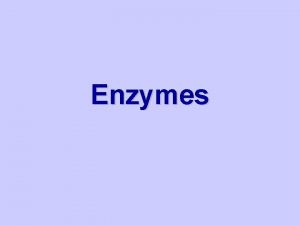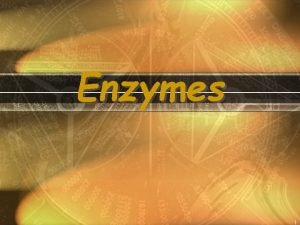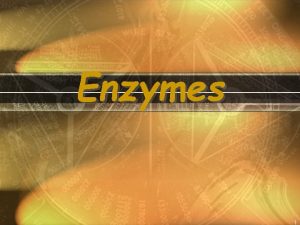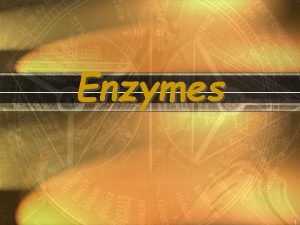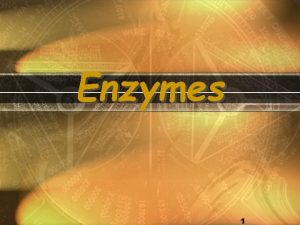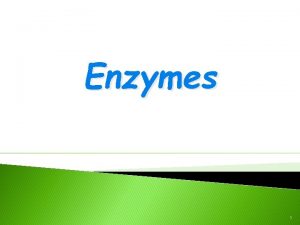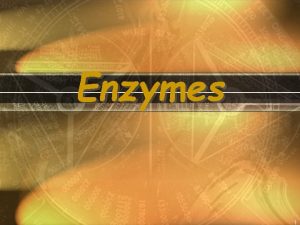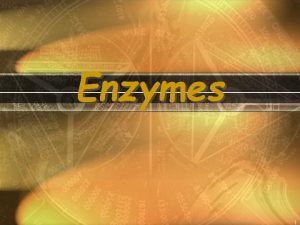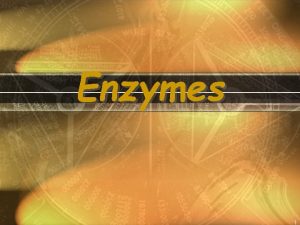Enzymes 1 What Are Enzymes Most enzymes are















- Slides: 15

Enzymes 1

What Are Enzymes? • Most enzymes are Proteins (tertiary and quaternary structures) • Act as Catalyst to accelerates a reaction • Not permanently changed in the process 2

Enzymes • Are specific for what they will catalyze • Are Reusable • End in –ase -Sucrase -Lactase -Maltase 3

How do enzymes Work? Enzymes work by weakening bonds which lowers activation energy 4

Enzymes Without Enzyme With Enzyme Free Energy Free energy of activation Reactants Products Progress of the reaction 5

6

Enzyme-Substrate Complex The substance (reactant) an enzyme acts on is the substrate Substrate Joins Enzyme 7

Active Site • A restricted region of an enzyme molecule which binds to the substrate Active Site Substrate Enzyme 8

Induced Fit • A change in the shape of an enzyme’s active site • Induced by the substrate 9

Induced Fit • A change in the configuration of an enzyme’s active site (H+ and ionic bonds are involved). • Induced by the substrate Active Site Enzyme induced fit 10

What Affects Enzyme Activity? • Three factors: 1. Environmental Conditions 2. Cofactors and Coenzymes 3. Enzyme Inhibitors 11

1. Environmental Conditions 1. Extreme Temperature are the most dangerous - high temps may denature (unfold) the enzyme. 2. p. H (most like 6 - 8 p. H near neutral) 3. Ionic concentration (salt ions) 12

2. Cofactors and Coenzymes • Inorganic substances (zinc, iron) and vitamins (respectively) are sometimes need for proper enzymatic activity • Example: Iron must be present in the quaternary structure - hemoglobin in order for it to pick up oxygen. 13

Two examples of Enzyme Inhibitors a. Competitive inhibitors: are chemicals that resemble an enzyme’s normal substrate and compete with it for the active site Substrate Competitive inhibitor Enzyme 14

Inhibitors b. Noncompetitive inhibitors: Inhibitors that do not enter the active site, site but bind to another part of the enzyme causing the enzyme to change its shape, shape which in turn alters the active site Substrate active site altered Enzyme Noncompetitive Inhibitor 15
 Antigentest åre
Antigentest åre Most enzymes are *
Most enzymes are * Most enzymes are
Most enzymes are In the name of allah the most beneficent the most merciful
In the name of allah the most beneficent the most merciful Most general to most specific classification
Most general to most specific classification Most general to most specific classification
Most general to most specific classification Aqeedah in islam
Aqeedah in islam The most gracious
The most gracious Beneficent pronunciation
Beneficent pronunciation In the name of god most gracious prayer
In the name of god most gracious prayer Most general to most specific classification
Most general to most specific classification In the name of god most gracious prayer
In the name of god most gracious prayer Guddi baji
Guddi baji In the name of allah, the most gracious, the most merciful
In the name of allah, the most gracious, the most merciful In the name of allah the most gracious
In the name of allah the most gracious Allah the most beneficent
Allah the most beneficent

